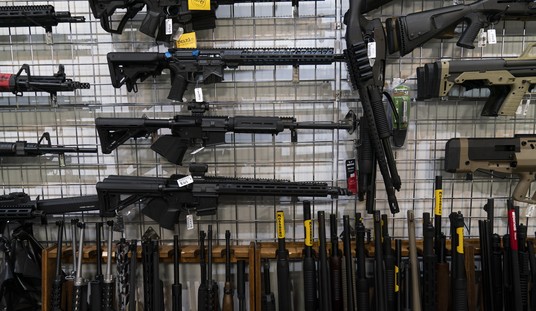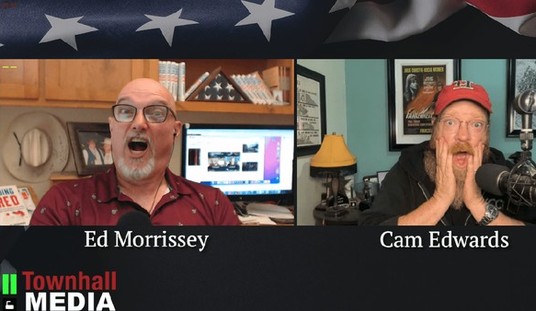Ryan Petty wasn’t planning on spending any time on social media yesterday. Instead, he was hoping to share a quiet day with family and friends on the fifth anniversary of the attack on Marjory Stoneman Douglas High School in Parkland, Florida and the murder of his daughter Alaina. But as Petty shares on today’s Bearing Arms Cam & Co, he found himself unable to stay silent as he watched gun control activists ply their grift, using both the Parkland anniversary and Monday night’s shooting at Michigan State University to engage in the “morally repugnant” attempt to use these tragedies to advance their anti-gun agenda.
Democrat prosecutors are soft on crime, allowing violent criminals to plead felonies down and avoid jail time. Because they aren’t felons, they pass background checks.
Tragic consequences for the victims and their families at Michigan State.
They deserved better than to live in… https://t.co/2FmOcrJIkv pic.twitter.com/60KEDj3ZeT— Ryan Petty (@rpetty) February 15, 2023
As Ryan and I discuss on the show, the man responsible for the attack at Michigan State was not only known to law enforcement, having previously been charged with a felony gun offense that prosecutors agreed to plead down to a misdemeanor. His family had born witness to his declining mental health over the past few years, with his father telling reporters that his son had grown “evil and mean” after the man’s mother died after a stroke two years ago.
“He was a mama’s boy. He loved his mom. They were tight. His mom was like his sister,” Michael McRae said. “Everything happened so fast.”
After her sudden passing, the younger McRae quit his job at a warehouse, where he loaded refrigerators into delivery trucks, and stayed in his room all day playing video games, his father said.
“He was grieving his mom. He wouldn’t let it go. He got bitter, bitter and bitter,” Michael McRae said. “His mom died, and he just started getting evil and mean. He didn’t care about anything anymore.”
Michael McRae, who was married to Linda for 45 years, said he tried to encourage his son to apply for jobs, seek counseling and attend church with him.
“I said, ‘Talk to Daddy. Let me know if something is on your mind. If you need help, I’ll get you help,'” the father said. “He said, ‘I’m OK, Dad, I don’t need help.”
Clearly that wasn’t the case, but the man’s father says he never believed his son was a danger to himself or others. Neighbors, on the other hand, say they’d grown alarmed at some of the man’s behavior, including using his backyard as target practice.
Multiple times over the summer, neighbors complained that the younger McRae had apparently fired shots outside of his home, said Megan Bender, 34, who lives nearby.
“He was firing a firearm out of the back door of the house into the yard,” Bender said from her home. “We’re right in the city. You shouldn’t be firing a firearm in the middle of the city.”
It’s unclear why police never arrested or cited the man for discharging his firearm in a residential setting, but apparently the complaints never triggered an official response from law enforcement.
As Petty points out, the suspect shares many commonalities with other active shooters. The Secret Service recently released a report detailing their examination of nearly 200 incidents of “targeted violence” that documents some of the red flags raised by a number of the perpetrators.
- Most of the attackers had exhibited behavior that elicited concern in family members, friends, neighbors, classmates, co-workers, and others, and in many cases, those individuals feared for the safety of themselves or others.
- Many attackers had a history of physically aggressive or intimidating behaviors, evidenced by prior violent criminal arrests/charges, domestic violence, or other acts of violence toward others.
- Half of the attackers were motivated by grievances, and were retaliating for perceived wrongs related to personal, domestic, or workplace issues.
- Most of the attackers used firearms, and many of those firearms were possessed illegally at the time of the attack.
- One-quarter of the attackers subscribed to a belief system involving conspiracies or hateful ideologies, including anti-government, anti-Semitic, and misogynistic views.
- Many attackers experienced stressful events across various life domains, including family/romantic relationships, personal issues, employment, and legal issues. In some of these cases, attackers experienced a specific triggering event prior to perpetrating the attack.
- Over half of the attackers experienced mental health symptoms prior to or at the time of their attacks, including depression, psychotic symptoms, and suicidal thoughts.
Concerning behavior? Check. A specific triggering event? Check. Mental health symptoms? Check.
Now, this doesn’t mean that everyone who suffers a traumatic event in their life or is diagnosed with depression is at risk of becoming an active shooter. But as Petty says, a complete picture of many of the individuals who do plan or carry out a targeted attack on innocent victims often finds a number of these warning signs were present, which should give police, mental health professionals, and even politicians a starting point to address and prevent these tragedies without targeting tens of millions of law-abiding gun owners or criminalizing a fundamental civil right. There truly is a need for reform, but it’s the criminal justice and mental health systems that are in dire need of repair, not the right to keep and bear arms.










Join the conversation as a VIP Member